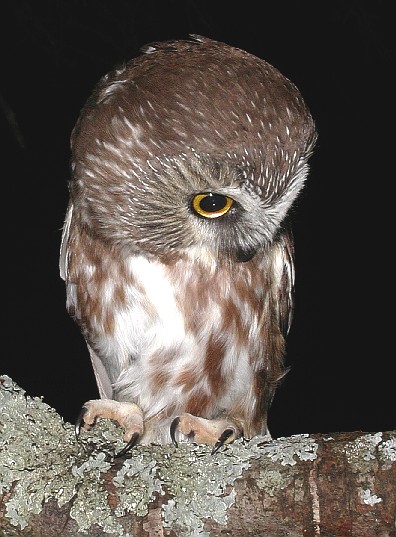
November 2001
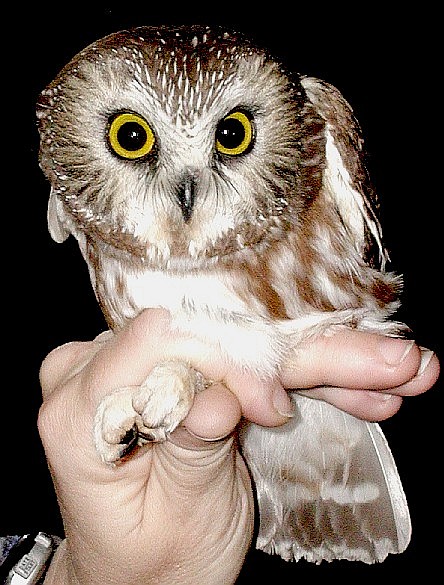
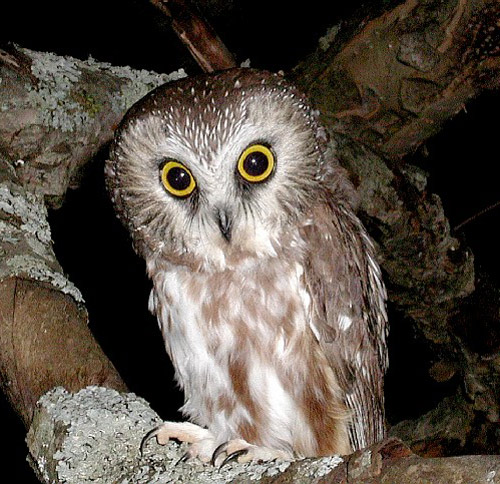
Northern Saw-whet Owl #764-53706 poses for a picture or two after banding!
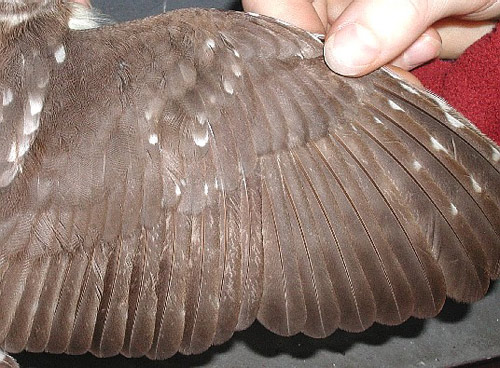
Its wing plumage lacked any contrasts among molted and unmolted flight feathers, showing it to be a hatching year (HY) bird.
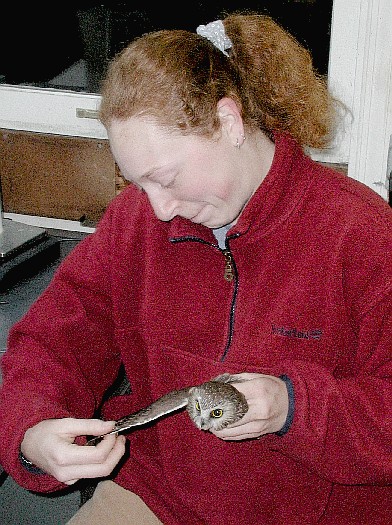
In order to determine its age, Powdermill banding intern, Adrienne Leppold, examines the wing plumage of #764-53706.
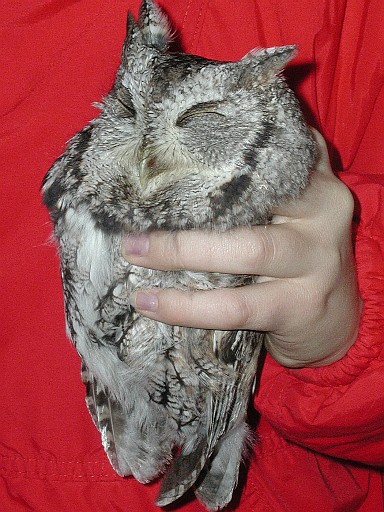
Because heavy white frost that had settled onto all of our open nets overnight (making them both highly visible and very stiff and heavy).
While the nets were thawing enough to catch birds, we took the opportunity to continue our quest for night birds. To do this we erected a ladder up to at several large nest boxes that we have put up for use by roosting Eastern Screech Owls.
First, we checked a box where a gray phase EASO had been seen by our resident mammalogists (Dr. Joseph Merritt and his Research Assistant, Jamie Fischer) while they were searching for flying squirrel roosts a couple of days ago. Sure enough, there was an owl at home when banding intern, Brian Jones, reached into the box. It turned out to be a very fat (nearly a "3" on our scale of 0-3, and weighing 194.7 grams) and very sleepy owl that had been banded previously.
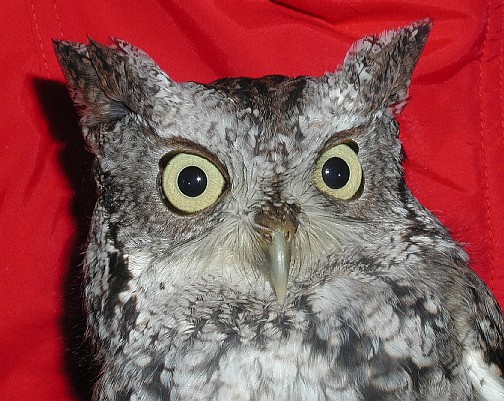
As it turns out, #745-11130 had been caught and originally banded from the exact same box almost seven years earlier, on New Year's Day in 1995! At banding she was determined to be a second-year (SY) bird, which means she hatched in the spring of 1994. She had been recaptured in the same box another time, on 2/25/96, or about a year after she was banded.
An old hand at being handled, #745-11130 barely opened her eyes from the time she was removed, through the entire time that she was being processed in our banding lab (about a quarter mile away from the box where she was recaptured), to when she was returned to the box about a half hour later. She never made any attempt to grab with her talons or to bite.
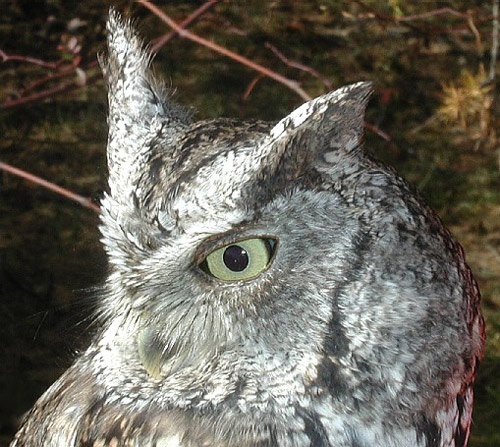
A check of another roost box turned up another banded gray phase EASO, but this one was wide awake and "lean and mean" (no fat and weighing just 177.8g)!
#745-11141 and her three downy young were originally banded out of a box within 200 yards of the banding lab on 5/25/98 (when she was determined to be an SY bird).
She was recaptured today in a box <150 yards from the lab and within 300 yds. of the box where she was found nesting three and a half years ago.
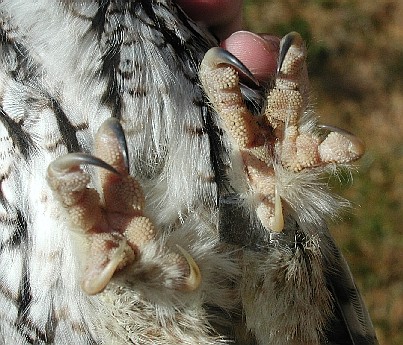
Unlike the docile #745-11130, #745-11141 kept everyone on their toes watching out for her toes, and her beak, too!
